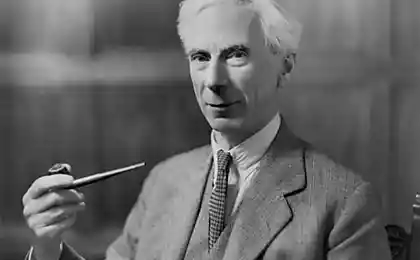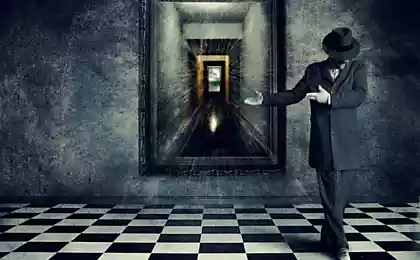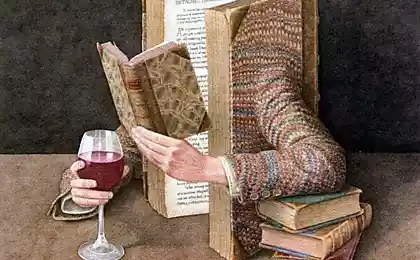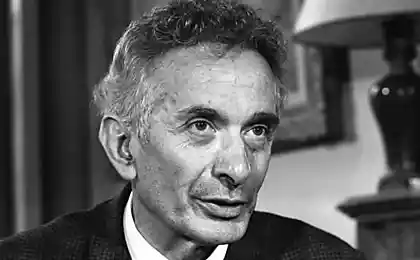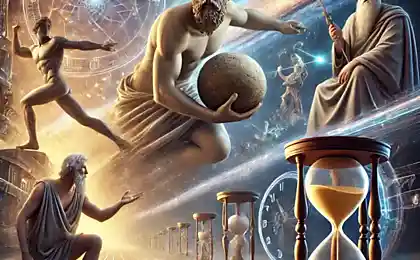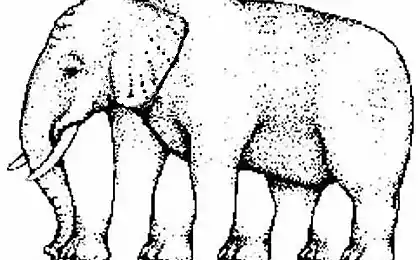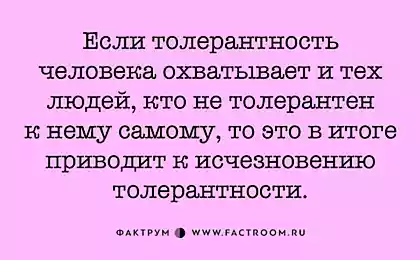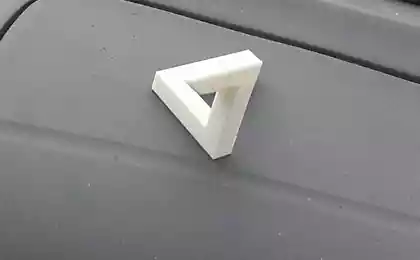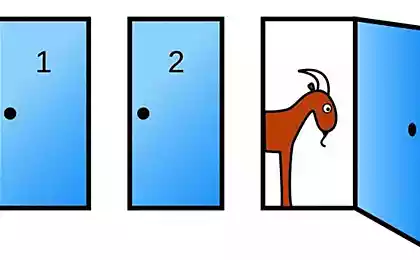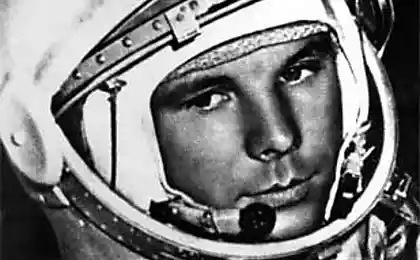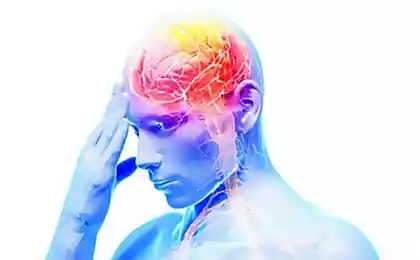277
Surprising Paradoxes That Will Pull You Into a Puzzle

Paradoxes can be found everywhere, from ecology to geometry and from logic to chemistry. Even the computer you are reading on is full of paradoxes. Here are ten explanations of quite fascinating paradoxes. Some of them are so strange that we just can’t fully understand what the point is.
1. The Banach-Tarsky paradox: Imagine holding a ball. Now imagine that you start to tear this ball into pieces, and the pieces can be any shape you like. Put the pieces together so that you have two balls instead of one. What will be the size of these balls compared to the original ball?
According to set theory, the two balls will be the same size and shape as the original ball. In addition, given that the balls have a different volume, then any of the balls can be converted in accordance with the other. This allows us to conclude that the pea can be divided into balls the size of the Sun.
The trick of the paradox is that you can tear the balls into pieces of any shape. In practice, this is impossible – the structure of the material and ultimately the size of the atoms impose some limitations.
In order for it to really be possible to tear the ball the way you like, it must contain an infinite number of available null-dimensional points. Then the ball of such points will be infinitely dense, and when you tear it, the shapes of the pieces can become so complex that they will not have a certain volume. And you can assemble these pieces, each containing an infinite number of dots, into a new ball of any size. The new ball will still consist of infinite points, and both balls will be equally infinitely dense. If you try to put the idea into practice, it will not work. But everything works well when working with mathematical spheres – boundlessly divisible number sets in three-dimensional space. The solved paradox is called the Banach-Tarsky theorem and plays a huge role in mathematical set theory.
2. Obviously, whales are much larger than us, which means that they have much more cells in their bodies. Each cell in the body can theoretically become malignant. So whales are much more likely to get cancer than humans, right?
Not like that. The Peto paradox, named after Oxford professor Richard Peto, argues that there is no correlation between animal size and cancer. Humans and whales have about the same chance of getting cancer, but some breeds of tiny mice are much more likely.
Some biologists believe that the lack of correlation in the Peto paradox can be explained by the fact that larger animals resist tumors better: the mechanism works in such a way as to prevent mutation of cells in the process of division.
3. For something to physically exist, it must be present in our world for some time. There can be no object without length, width, and height, and there can be no object without “duration”—an “instantaneous” object, that is, one that does not exist at least for some time, does not exist at all.
According to universal nihilism, the past and the future do not take up time in the present. In addition, it is impossible to quantify the duration we call “present time”: any amount of time you call “present time” can be divided into parts – past, present, and future.
If the present lasts, say, a second, then this second can be divided into three parts: the first part will be the past, the second - the present, the third - the future. A third of the second we now call the present can also be divided into three parts. Surely you have already understood the idea – you can go on forever.
So the present doesn't really exist because it doesn't go on in time. Universal nihilism uses this argument to prove that nothing exists at all.
4. In solving problems that require thoughtful reasoning, people have difficulties. On the other hand, basic motor and sensory functions like walking do not cause any difficulties at all.
But if we talk about computers, the opposite is true: computers are very easy to solve complex logical problems like developing a chess strategy, but it is much more difficult to program a computer so that it can walk or reproduce human speech. This distinction between natural and artificial intelligence is known as the Moravec paradox. Hans Moravec, a research fellow in the Department of Robotics at Carnegie Mellon University, explains this observation through the idea of reverse engineering our own brain. Reverse engineering is the hardest to do with tasks that humans perform unconsciously, such as motor functions.
Because abstract thinking became part of human behavior less than 100,000 years ago, our ability to solve abstract problems is conscious. So it's much easier for us to create technology that emulates this behavior. On the other hand, we don’t think about things like walking or talking, so it’s harder to get artificial intelligence to do the same.
5. Benford's Law: What is the chance that a random number starts with a 1? Or the number 3? Or 7? If you’re a little familiar with probability theory, you might assume that the probability is one in nine, or about 11 percent.
If you look at the actual numbers, you’ll notice that 9 is much less common than 11 percent of the time. Also, far fewer numbers than expected start with “8,” but a whopping 30% of numbers start with “1.” This paradoxical pattern manifests itself in all sorts of real-world cases, from population size to stock prices and river lengths.
Physicist Frank Benford first noted this phenomenon in 1938. He found that the frequency of a digit appearing as the first drops as the digit increases from one to nine. That is, "1" appears as the first digit in about 30.1% of cases, "2" appears about 17.6% of cases, "3" - about 12.5%, and so on to "9", acting as the first digit in only 4.6% of cases.
To understand this, imagine that you are consistently numbering lottery tickets. When you have numbered tickets from one to nine, the chance of any digit being first is 11.1 percent. When you add ticket number 10, the chance of a random number starting with "1" increases to 18.2%. You add tickets 11 through 19, and the chance of a ticket number starting with a "1" continues to rise, peaking at 58 percent. Now you add ticket number 20 and continue to number your tickets. The chance of a number starting with a “2” increases, and the likelihood of it starting with a “1” slowly drops.
Benford's law does not apply to all distributions of numbers. For example, sets of numbers whose range is limited (human height or weight) do not fall under the law. It also does not work with sets that have only one or two orders. However, the law applies to many types of data. As a result, authorities can use the law to detect fraud: when the information provided does not follow Benford's law, authorities can conclude that someone fabricated the data.
6. Genes contain all the information necessary for the creation and survival of an organism. It goes without saying that complex organisms must have the most complex genomes, but this is not true.
Single-celled amoebas have genomes 100 times larger than humans, in fact, they have perhaps the largest known genomes. And in very similar species, the genome can be radically different. This strangeness is known as the C paradox. An interesting takeaway from the C paradox is that the genome may be larger than needed. If all the genomes in human DNA were used, the number of mutations per generation would be incredibly high.
The genomes of many complex animals like humans and primates include DNA that does not encode anything. This huge amount of unused DNA, varying greatly from creature to creature, seems to depend on nothing, which creates the C paradox.
7. Imagine an ant crawling on a rubber rope one meter long at a speed of one centimeter per second. Also, imagine that the rope stretches one kilometer every second. Will the ant ever make it to the end?
It seems logical that a normal ant is not capable of this, because its speed is much lower than the speed at which the rope is stretched. However, the ant will eventually reach the opposite end.
When the ant has not even started moving, it has 100% rope in front of it. After a second, the rope became much larger, but the ant also traveled some distance, and if you count in percentages, the distance that it must pass, decreased - it is already less than 100%, albeit not much.
Although the rope is constantly stretched, the small distance traveled by the ant also becomes larger. And although the rope is lengthening at a constant rate, the path of the ant is getting slightly smaller every second. The ant continues to move forward at a constant speed. Thus, with each second, the distance that he has already traveled increases, and the distance that he must pass decreases. In percentage, of course.
There is one condition for the problem to have a solution: the ant must be immortal. So, the ant will reach the end in 2.8×1043.429 seconds, which is slightly longer than the universe exists.
8. The predator-prey model is an equation describing the real ecological situation. For example, the model can determine how much the number of foxes and rabbits in the forest will change. Let’s assume that the grasses that rabbits eat are becoming more and more abundant in the forest. We can assume that this outcome is favorable for rabbits, because with an abundance of grass, they will reproduce well and increase the number.
The paradox of ecological balance argues that this is not the case: first, the number of rabbits will indeed increase, but the growth of the rabbit population in a closed environment (forest) will lead to an increase in the population of foxes. Then the number of predators will increase so much that they will first destroy all the prey, and then die out themselves.
In practice, this paradox does not apply to most animal species, if only because they do not live in a closed environment, so animal populations are stable. In addition, animals are able to evolve: for example, in new conditions, prey will have new defense mechanisms.
9. Gather a group of friends and watch this video together. When you are done, let everyone give their opinion, whether the sound increases or decreases during all four tones. You will be surprised how different the answers will be.
To understand this paradox, you need to know something about musical notes. Each note has a certain height, depending on whether we hear a high or low sound. The note of the next, higher octave, sounds twice as high as the note of the previous octave. Each octave can be divided into two equal triton intervals.
In the video, a newt separates each pair of sounds. In each pair, one sound is a mixture of the same notes from different octaves – for example, a combination of two notes before where one sounds higher than the other. When the sound in a newt passes from one note to another (for example, a sol-sharp between two to), it is perfectly reasonable to interpret the note as higher or lower than the previous one.
Another paradoxical property of newts is the feeling that the sound is constantly getting lower, although the pitch does not change. In our video, you can see the effect for as long as ten minutes.
10. Before you two glasses of water, exactly the same in all but one: the temperature of the water in the left glass is higher than in the right. Place both glasses in the freezer. Which glass will freeze the water faster? You can decide that in the right, in which the water was originally colder, but hot water will freeze faster than water at room temperature.
This strange effect is named after a Tanzanian student who observed it in 1986 while freezing milk to make ice cream. Some of the greatest thinkers—Aristotle, Francis Bacon, and René Descartes—have previously noted this phenomenon but have been unable to explain it. Aristotle, for example, hypothesized that a quality is enhanced in an environment opposite to that quality.
The Mpemba effect is possible due to several factors. Water in a glass of hot water may be less, as some of it will evaporate, and as a result, less water should freeze. Also, hot water contains less gas, which means that convection flows will occur more easily in such water, therefore, it will be easier to freeze it.
Another theory is that the chemical bonds that hold water molecules together weaken. The water molecule consists of two hydrogen atoms bonded to one oxygen atom. When the water is heated, the molecules move slightly apart, the bond between them weakens, and the molecules lose some energy – this allows hot water to cool faster than cold water.
Source: Brainstorm-blog.ru
Source: /users/1080

